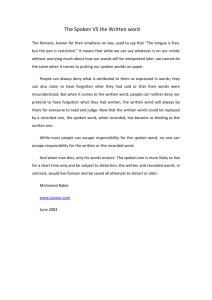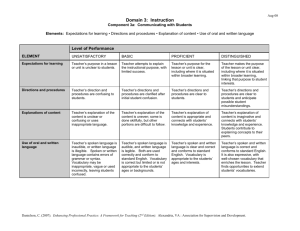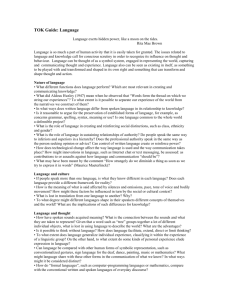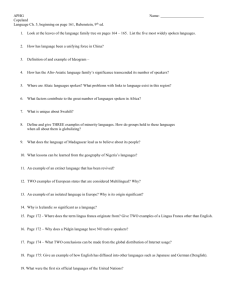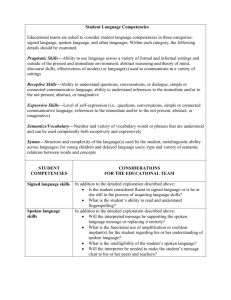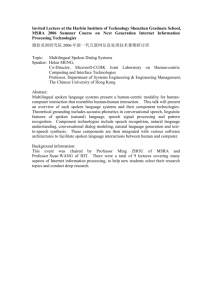Success Criteria - Alne Primary School
advertisement
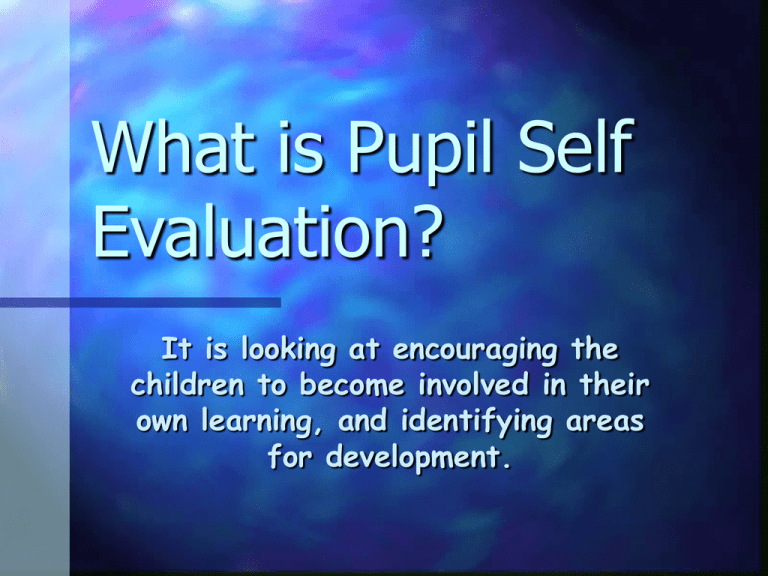
What is Pupil Self Evaluation? It is looking at encouraging the children to become involved in their own learning, and identifying areas for development. What does this involve? Four main areas: Success Criteria Talking Partners Sharing Unit Coverage Evaluating Learning. SUCCESS CRITERIA Is a list of ingredients for completing a piece of work, or a task. Success criteria is generally generated with the children, although the teacher will have in their mind what they want it to be. Success criteria is displayed throughout the lesson, and referred to in marking, feedback and subsequent sessions. Success criteria forms part of most lessons including core and foundation subjects. An Example of Success Criteria Learning Objectives Context Success Criteria Year 5 Year 5 Year 5 To be able to use direct speech. An interview with Queen Victoria Put speech marks before and after the first word spoken. Use a capital letter for the first word spoken each time. Start each persons speech on a new line. Use a comma before ‘said’ etc. Examples of Success Criteria Learning Objectives Context Success Criteria Year 2 Year 2 Year 2 To be able to use direct speech. Harry Potter excerpts Put “ “ at the beginning and end of spoken words. Use a capital letter at the beginning of speech. Talking Partners Are randomly selected and they are changed on a three weekly basis (or twice in a half term depending on term length) In Key Stage 2 partners are selected for Literacy, Numeracy and Other Subjects, in Key Stage 1 the children keep the same partner for all subjects and change them every two weeks. Talking Partners are an integral part of most lessons, and the ownership of the lesson becomes more on the children sharing and discussing, rather than the teacher talking. Talking Partners Sharing Unit Coverage Each term the Class look together at the main subject in their topic e.g. History this term. The teacher shares the objectives to be covered with the class, and finds out what the children already know, as well as asking them what they would like to find out. Questions are formulated and agreed with the class, and the planning is displayed in the classroom, and is referred to throughout the topic. Sharing Unit Coverage One way of displaying the objectives to be covered could be through forming questions and displaying them on a washing line. (Year 4/5 – Spring 2005) Sharing Unit Coverage Alternatively you could display the actual planning in the centre of your topic display board, and give the children their own small copy. (Year 5/6 – Spring 2005) Sharing Unit Coverage Autumn 2006 Peer Evaluation During some lessons the children are encouraged to mark each others work, against the lesson objective. This is done in a variety of ways throughout the school ranging from verbal comments and opinions in Key Stage 1, possibly with their Talking Partner, through to Writing Response Sheets in Year 5/6. When marking another pupils work the children will use the list of success criteria to identify successes, and suggest an area for improvement. Teacher’s plan in time for improvements to be made in follow up lessons. Writing Response Sheet Evaluating The Explanation Success Criteria To write a super explanation I need to remember to: Use a question for my title, with a question mark. Use an opening sentence to introduce what I am going to explain. Explain the process in time order. Use time connectives to link the stages of the process. Use some ‘special words’ about the topic. Punctuate my work correctly. Name: · I would like to say well done because · I think you could improve your work by Self Evaluation •At times the children are asked to consider how well they feel they have worked against the specific lesson objective, and again feedback can take different forms throughout the school. In Class 2 we have the traffic light system, in Class 3 they use three trays. Higher up the school it may be written comments on how well they feel they have done, possibly against success criteria again.





